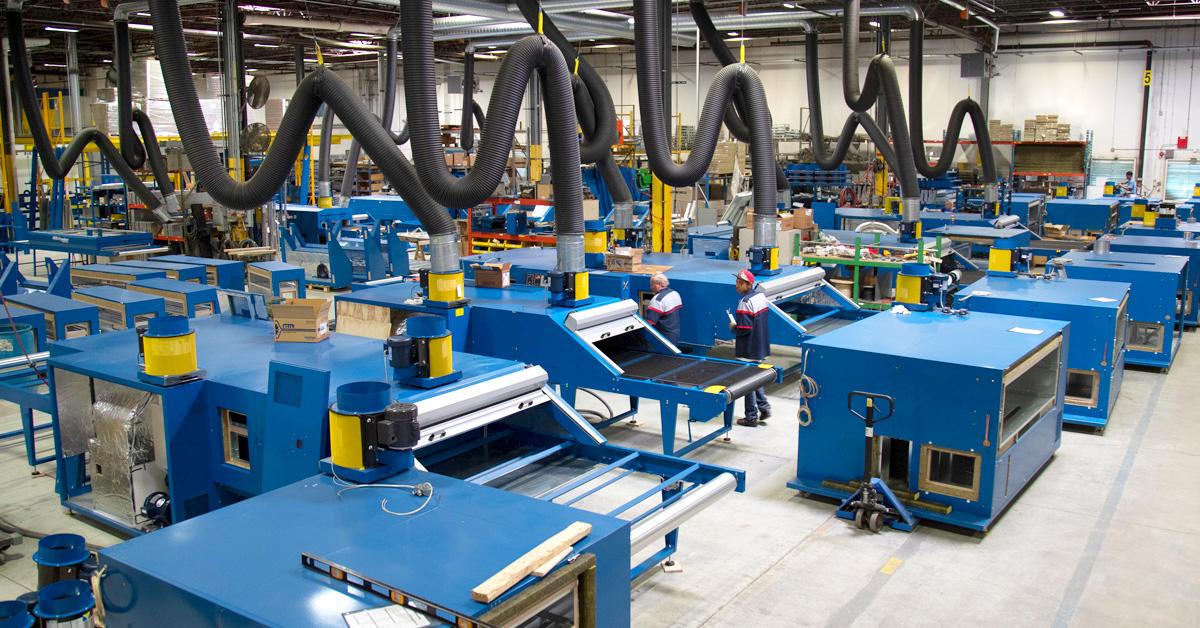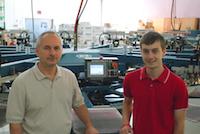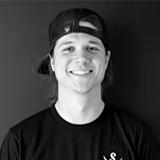How big is your shop?
Dryers come in all shapes and sizes, but the most important part is the heat section. M&R builds most of our dryers with heat sections that come in 2' increments and the most common size heat sections are 6', 8', 10', and 12'. We make bigger sizes for high production applications. They come in a variety of belt widths from 24” to 84” in one foot increments. The infeed and outfeed sections are the exposed belt at the entrance and exit of the heat chamber. These come in different sizes depending on what type of environment you need the dryer to handle. If you are tight on space the best thing to do is work on a floor plan first. M&R has a floor plan layout program that will help you with this. It is available free of charge when you create an account on our website. (www.mrprint.com/shop-floor-layout-software)
What electrical and gas utilities are available at your location?
Do you have single phase or 3 phase electric service in your shop? Find out from your electrician or landlord if you don't know because it will impact your decision on what the right dryer is for you. Electric dryers are usually less expensive than gas dryers so if you are thinking that an electric IR (infrared) dryer is best for you and 3 phase power is available that is how you should configure the dryer. Running a dryer with 3 phase power will cost about half as much to operate compared to a single phase dryer. But don't worry if you only have single phase power. M&R will be able to offer you a suitable alternative in most cases.
Is gas available at your shop? Gas dryers can save as much as 30% in energy costs compared to electric dryers depending on where your shop is located. M&R has a guide on dryer operating costs to help you see how much you can save. Even though a gas dryer will cost more up front to buy, you will far surpass that extra cost in energy savings over the first few years of operation.
How many presses do you need the dryer to handle?
If you are planning on running more than one manual press or auto on the dryer, or a combination of both, you may want an extended infeed so there is enough open belt space to lay garments down on both sides of the belt.
What will be your dryer requirements in a year or two?
If you need a dryer now to handle your current work flow but have plans to add another press in the future you may want to buy a bigger dryer than you need right now in anticipation of growth. The M&R Sprint 3000 gas fired dryer has an expandable heat chamber that allows you to lengthen the heat chamber for higher volume throughput in the future.
What ink systems will be using now and in the future?
There is a lot of development going on right now with water based ink systems. Although you can get adequate results with some electric IR dryers, a gas-fired convection (hot air) dryer is a better choice since it has increased air flow to help with evaporation of water based inks. Do you know the curing requirements of the inks you are using? Ask your ink supplier for the curing specifications for your inks. You really need to know that to make an educated decision on the best dryer.
What is your budget?
Electric IR dryers are usually less expensive up front, but gas-fired dryers are cheaper to operate, they do better with athletic wear because of constant temperature monitoring, and more air movement from a gas dryer is beneficial when curing water based and discharge inks.
How many garments do you expect the dryer to handle per hour?
This is by far the most important information you need when buying a dryer. M&R has data that will show you how many shirts per hour each of our dryers can handle when printing plastisol inks. Remember that long sleeve garments, XXXL garments, and hoodies take up more space on the dryer belt so consider how often you print these styles. Don’t let your dryer dictate your profit! You want to buy a dryer with a little excess capacity so that when you are running faster on small prints your dryer will keep up. Waiting for the dryer belt to clear so that you can lay the next garment down is something to avoid if at all possible.
Once you have answered these questions, the next step is to visit mrprint.com or contact M&R directly to get in touch with your regional sales manager. They can guide you the rest of the way to making the best choice in a dryer for now and for the future of your screen printing shop!

About the Author
- Email Address glen.carliss@mrprint.com
- Phone +1 630 258 1194




